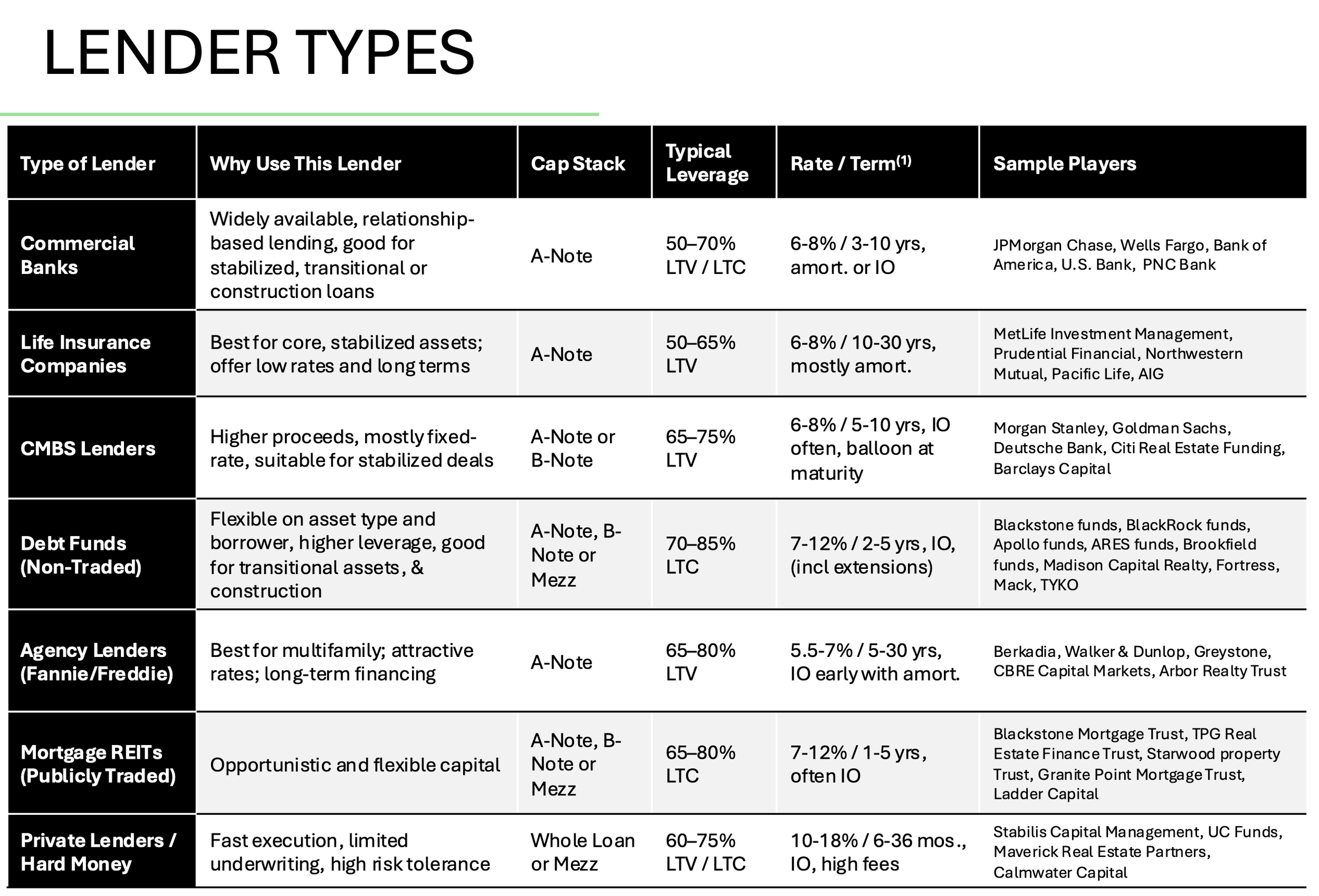Real Estate Lenders: A Quick Guide
In commercial real estate, the type of lender you choose can significantly shape your financing terms and overall deal structure. Here's a breakdown of the main lender categories, what they're best for, and how they typically operate:
1. Commercial Banks
Best For: Stabilized, transitional, or construction loans.
Leverage: 50–70% LTV/LTC
Terms: 6–8% interest for 3–10 years; amortizing or interest-only (IO)
Notable Players: JPMorgan Chase, Wells Fargo, Bank of America
2. Life Insurance Companies
Best For: Core, stabilized assets needing low rates and long durations.
Leverage: 50–65% LTV
Terms: 6–8% for 10–30 years; mostly amortizing
Notable Players: MetLife, Prudential, Northwestern Mutual
3. CMBS Lenders (Commercial Mortgage-Backed Securities)
Best For: Stabilized deals seeking higher, fixed-rate proceeds.
Leverage: 65–75% LTV
Terms: 6–8% for 5–10 years; often IO with balloon payments
Notable Players: Morgan Stanley, Goldman Sachs, Deutsche Bank
4. Debt Funds (Non-Traded)
Best For: Transitional assets and construction; high leverage and flexibility.
Leverage: 70–85% LTC
Terms: 7–12% for 2–5 years; IO, extensions common
Notable Players: Blackstone, Apollo, Brookfield, Fortress
5. Agency Lenders (Fannie Mae / Freddie Mac)
Best For: Multifamily projects needing low-cost, long-term financing.
Leverage: 65–80% LTV
Terms: 5.5–7% for 5–30 years; IO early, then amortizing
Notable Players: Berkadia, CBRE Capital Markets, Greystone
6. Mortgage REITs (Publicly Traded)
Best For: Opportunistic plays needing flexible capital.
Leverage: 65–80% LTC
Terms: 7–12% for 1–5 years; often IO
Notable Players: Starwood, Ladder Capital, TPG Real Estate Finance
7. Private Lenders / Hard Money
Best For: Speedy execution and high-risk tolerance.
Leverage: 60–75% LTV/LTC
Terms: 10–18% for 6–36 months; IO with high fees
Notable Players: Stabilis Capital, UC Funds, Calmwater Capital
(1) estimated as of 4.7.25


